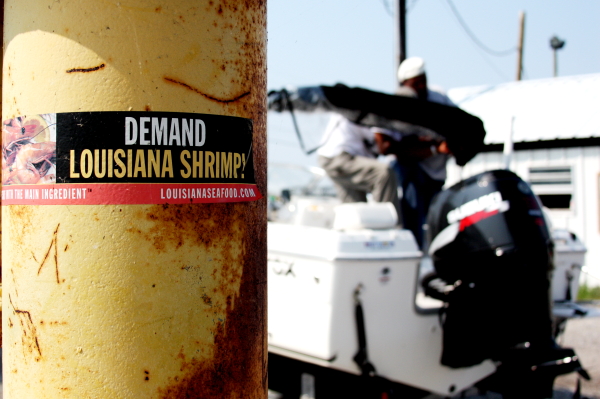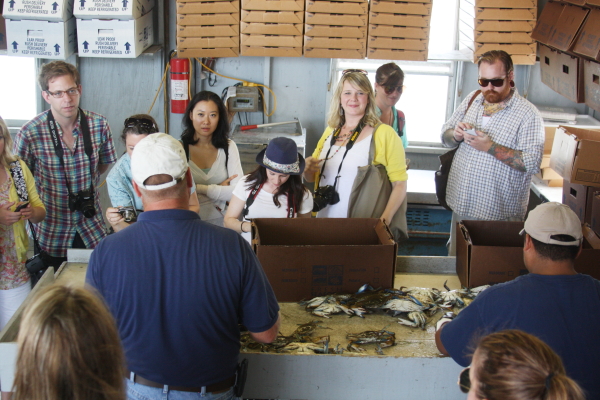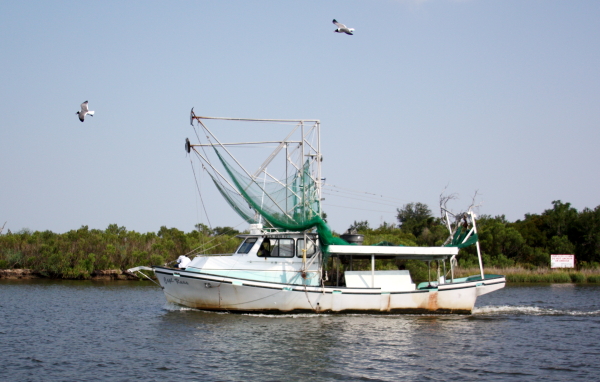 “When you think of all the news you’ve seen about Louisiana, what images flash through your mind?” asked Mike Voisin, a seventh-generation Louisiana oysterman. Voisin, the CEO of Motivatit Oysters, paced around the air-conditioned conference room as he spoke to his visiting guests.
“When you think of all the news you’ve seen about Louisiana, what images flash through your mind?” asked Mike Voisin, a seventh-generation Louisiana oysterman. Voisin, the CEO of Motivatit Oysters, paced around the air-conditioned conference room as he spoke to his visiting guests.
An assortment of bloggers and food writers from across the States–hand-picked to observe Louisiana’s seafood industries and partake in the state’s diverse food culture–sat around the conference room table conjuring up images: submerged homes, flood-stranded dogs, desperate men and women on rooftops waving white sheets for help, oil-slicked wildlife, and tar-soaked birds.
“We are not what the perception of what the media has made us,” Voisin said. Despite the fact that almost one hundred percent of the state’s fisheries are open and functioning and have passed national and state testing for health and safety, much of the seafood buying public fear the Gulf-state’s products aren’t safe to eat. According to Voisin, the unprecedented attention of the media has given Louisiana’s seafood industry a bad reputation.
“It’s kind of hard to get that image of an oil slicked pelican out of your mind when you’ve seen it a million times, isn’t it?” Voisin said. “Louisiana has a branding problem…We have shrimp, crabs, and oysters but what we don’t have are people willing to buy.”
The uniquely difficult challenge facing the Louisiana seafood industry is exactly why Louisiana Seafood Promotions and Marketing Board decided they needed to reach out to consumers in a revolutionary way–through food.
An Invitation to see the real Louisiana
When it comes to news headlines, a couple of things sell really well: natural disasters, tragic loss of life, celebrity gossip, hero stories, and adorable animals. When one single news event touches all these aspects with one soaring narrative, it’s a media goldmine.
Blame it on the perfect storm of natural disasters that’s befallen Louisiana over the past seven years, but the state has certainly been the source of a lot of headline news. With Hurricane Katrina in 2005, and Deep Water Horizon’s oil spill in April of 2010, international media teams swooped into the coastal state to document the disasters. Stories of tragedy, redemption, faith, hope, celebrity interest, and distress were easy to find in this Creole/Cajun state.
Thanks to a huge influx of money to the state of Louisiana, much progress has been made in just one year since the oil spill. Houses and businesses have been rebuilt, fisheries and rice fields are producing again, and tourism is improving (According to the tourism board, the state earned 5.3 billion dollars in tourism last year). Yet despite the positive changes and commitment to becoming a strong and successful state, Louisiana’s seafood industry is struggling.
Seeing a problem, Louisiana’s Seafood Promotion and Marketing Board did some research and quickly realized the general public couldn’t get over the horrifying images of the past so easily. So, in order to change perceptions about the seafood and motivate people to start buying Louisiana seafood again, they began devising a different sort of plan to get the word out.
Rather than coming up with slick slogans, cunning advertising, or a give away contest, the Seafood Board decided to call upon a handful of trusted voices in the food world to come and experience Louisiana from a culinary and cultural point of view. Who better to get the word out about a food crisis than a bunch of hungry and inquisitive food bloggers?


